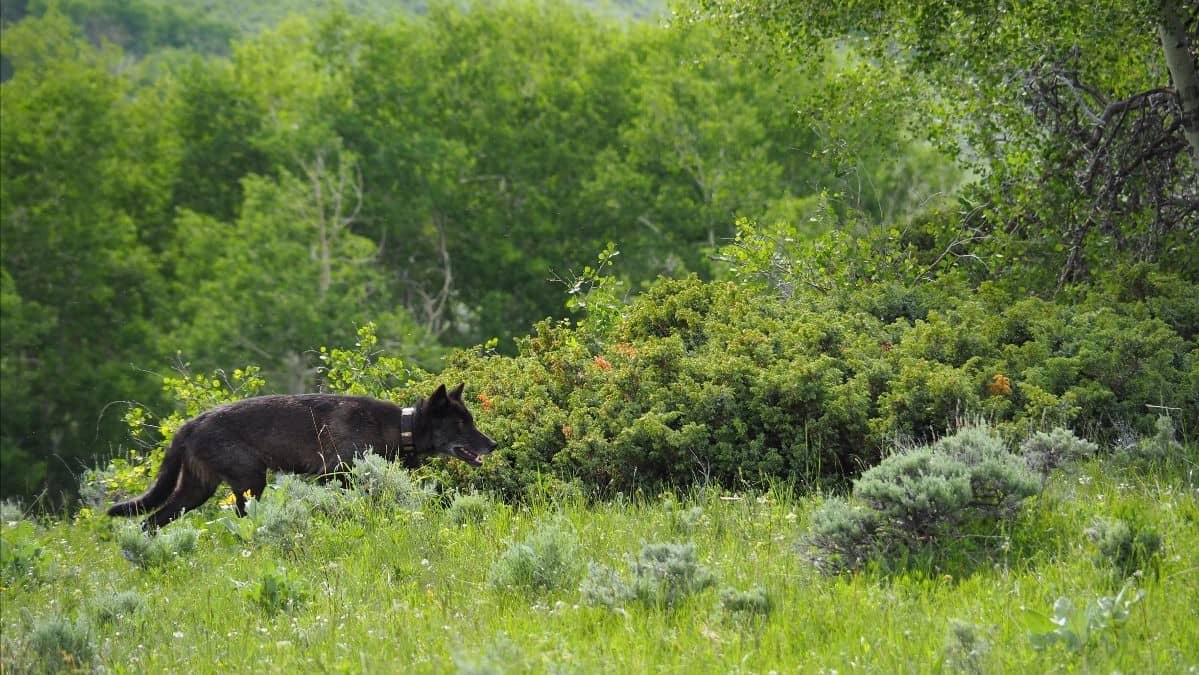
UPDATE at 12:58 p.m. Tuesday, April 12, from Travis Duncan, Public Information Supervisor for Colorado Parks and Wildlife.
“CPW has not seen evidence of denning behavior from the known breeding pair of wolves in Jackson County. The collar on female wolf pup 2202 has not fallen off.
Other updates/background information: The female 1084 and male 2101 produced six pups in 2021. Their territory has remained in the North Park area since 2021. 1084 naturally migrated into Colorado, was fitted with a collar while in Wyoming and is known to have been part of the Snake River Pack. Given the location of the pack, it is assumed that 2101 also migrated from Wyoming. CPW biologists have not conducted a health assessment on the animals, only the male breeder and one of the pups has been handled. We do know that all six pups that were born in spring of 2021 have survived. Typically there is some pup mortality through the year, so 100% survival is somewhat surprising.”
The wolf population in Jackson County is expected to grow probably by the weekend. A new litter is expected. Don Gittleson raises cattle near the current den, which already has a pack of eight. Three of his head of cattle have been attacked by those wolves since mid-December, and they died.

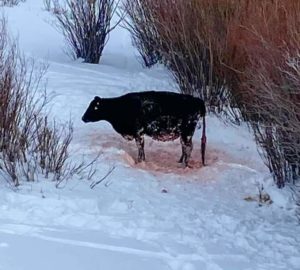
“She was in heat on Feb. 13 here, right out on the ranch, out in the pasture here. They were here. So, yeah, I think she’s more than likely going to have another pack of pups, another litter. There’s no reason to think that this litter won’t be every bit as big as the last litter, if not bigger. ‘Don’t they have the pups around April 15?’ Yes, and she’s scheduled to do that.”
Here’s Bill de Vergie, the Area 6 Wildlife Manager with Colorado Parks and Wildlife out of Meeker.

“Could be a second litter coming on the ground, absolutely. Time will tell. They get pretty solitary this time of year, especially when they’re about to have pups. So until the pups are up and around and big enough, we’ll just have to wait and see.”
De Vergie says Colorado Parks and Wildlife is aware of all of the wolves in Northwest Colorado, including those that came into NW Moffat County.

“I wouldn’t say we’re prepared as well as we want to be. Right now with the original group of wolves that showed up in Moffat County in the northwest corner, we were able to identify them and manage them a little bit but we really didn’t have to do much. And now with this pack that is established in Jackson County, near Walden, we’re reacting. We’re managing as best we can. We’re trying to help the Gittleson family and anybody else who might be having issues with the wolves. In the meantime, concurrently, we’re working with numerous working groups going right now doing the planning process. With the new relisting, now we have to engage with the U.S. Fish and Wildlife Service into the process, so that’s going to take a little bit more time, little more complexity to it but that’s the process that we’re working on, with the hopes of having a finalized plan by the end of 2023, because the statute told us we were supposed to reintroduce by the end of 2023. Whether that will still occur with the new relisting under the federal statute, we’ll have to find out but that’s the goal of the agency is we’re going to work to have a good plan ready to go.”
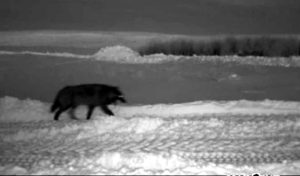
In a recent ruling, the wolves are now under federal management and there will be studies by U.S. Fish and Wildlife on the impact, with has jurisdiction over any state mandates. Here’s Adam VanValkenburg, president of the North Park Stockgrowers Association.
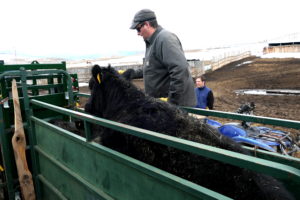
“The state has appropriated money for the impact study. Then they will go through the process of determining if the wolves need to be here, and what would be the federal plan going forward. Their study is going to be very thorough for the wolf and for the community. They’re going to cover everything and they’re going to do a very thorough job.”
One issue that will be studied is the 10(J) rule. Here’s Don Gittleson.
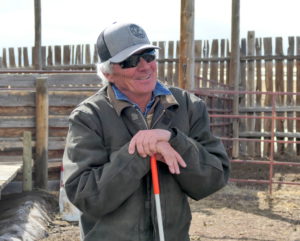
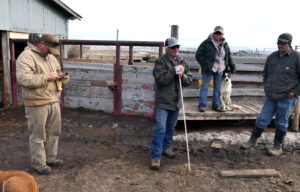
“The federal government has a rule, it’s the 10(J) rule. When they originally had wolves brought into Wyoming and Idaho, they were classified as experimental, non-essential species. And if they had two incidents where they killed livestock within a 12-month period, they would probably get destroyed. And these wolves have done that. That rule is not in effect right now, but it may become in effect, and it takes about a year for them to do that. Unless someone comes up with a good idea to make these wolves stop the behavior that they’ve been doing, this particular pack may be destroyed.”
The wolves came by the Gittleson ranch twice last week. A group called Working Circle is paying for Night Watch, which means someone is sitting in their car on the property, looking for the wolves. Then they notify Don Gittleson that they’re back.

Another suggested way to keep the wolves away is integrating burros into the herds. Colorado Parks and Wildlife brought in six wild burros.
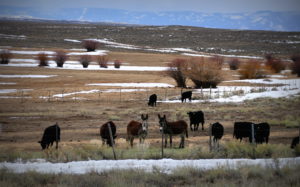
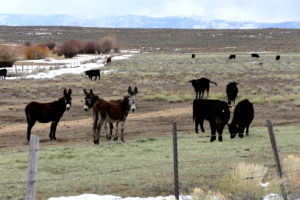
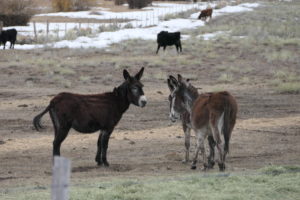
“They’re going OK. They get along with the cows OK. I don’t know that they’re going to stop a large group of wolves. But they might be able to stop one wolf. I don’t think they can stop a group of wolves. I’m not sure that anything would stop the group, the pack together. There’s six burros. Three are out with the cows and three are out with the yearling heifers.”
Working Circle is helping with mitigation and tactics to keep the wolves away from the Gittleson ranch and other ranches in Jackson County. Karin Vardaman is the director of Working Circle, and a wolf biologist.
“So one of the things we offer is called a baseline assessment or vulnerability risk assessments, in which we can go to a landowner, whether it is a public allotment or their private lands, and we assess the potential for wolf livestock conflict. We take all kinds of things into consideration. The landscape itself, the topography because wolves will take advantage of that. The cattle, the type of cattle, the ages of the cattle, how the operation is run, how cattle are handled and managed on that landscape, the economics of the situation, and we take a look at all of the pieces and then put them together and to evaluate vulnerability risk, and then to have a discussion with the landowner about what would potential loss mean to them. Is it worth putting resources to addressing that or maybe not. Maybe there are other things more important. And then look towards practices, approaches, or strategies that can potentially reduce vulnerability and at the same time build that ranch resiliency side so it’s not taking away from the ranch goals but adding to it.”
But right now, the Gittleson family and other ranchers are waiting to see if there’s a new litter of wolf pups in Jackson County this week. Karin Vardaman says wolves typically breed around Valentine’s Day, they have their litter on Tax Day, and they emerge from the den on Mother’s Day.
Links on wolf integration and mitigation from other parts of the country:
- How Wolves Change Rivers from True Nature Foundation
- Massive wolf kill disrupts long-running study of Yellowstone park packs, from Science
- America’s Gray Wolves: A Long Road to Recovery from the Center for Biological Diversity
- Native Rocky Mountain Wolves v. Introduced Canadian Gray Wolves from Skinny Moose
- Wolves in Colorado: History and Status from CSU Extension
- Adaptive use of nonlethal strategies for minimizing wolf-sheep conflict in Idaho by Oxford Academic Journal of Mammalogy
- Opinion: If only city dwellers who love gray wolves knew what it’s like to live among apex predators from Voices Across America
- Video of Wolf Testing Fladry from Washington Department of Fish and Wildlife
- Video of Washington Department of Fish and Wildlife fladry perimeter around a cow carcass
- Fladry fencing to prevent wolf/livestock conflict from People and Carnivores